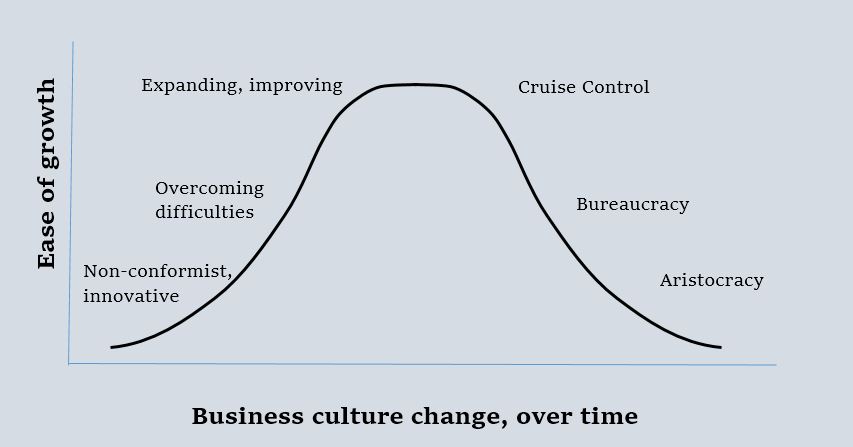Acquisitions: Be Aware!
Cultural incompatibility is a major reason that acquisition integrations fail. If you’re about to acquire a business you will go through Due Diligence to check the financial health of a business. However, many businesses do not try to understand the culture of the business they are intending to acquire.
Cultural Due Diligence is becoming recognized as an essential part of acquisition integrating planning. Yes, it’s true that a cultural incompatibility has never been cited as the reason to halt a deal, however, it is the reason for many failures.
Understanding the phases of business culture is a first step to cultural Due Diligence. By understanding these phases you will have a much greater understanding of what to expect if you close the deal.
What is Business Culture?
Business Culture is complex – and don’t assume that a business has a single culture: often teams within a business can differ significantly. For example
- Does a team answer an external phone call, or does it let a voicemail system answer it?
- Is there a habit to exchange ideas about a project, as it progresses – outside meetings?
- How do people dress at work?
- Are managers truly approachable?
- Are too many, or too few meetings held?
- Do people attend meetings on time?
- Do they respect their business competitors, hold them in contempt, or something in between?
A healthy culture encourages a business to create new products and maintain/extend existing products. Another way to put it is that a healthy culture encourages growth.
A business can grow without a healthy culture, but it can be difficult for some businesses to make growth. Sowhat makes it easier for some companies to grow more easily than others?
Influence of the phases of a business on culture.
As businesses mature they go through cultural cycles. This is not always connected to the size of the business. It doesn’t matter if you are large business like General Motors or a small business like a chain of specialist stores, as the business becomes more established it changes its nature.
Lawrence Miller identified in his book “Barbarian to Bureaucrats” the following cultural cycles that businesses go through.

Here a few example scenarios to give an idea of these phases. It is not at all exhaustive.
Non-conformist business
Small businesses that have a unique idea and have passion. Examples are Porsche or Apple Computers in their early days: people creating their dream, perhaps not having a business plan, and believing that the public will buy into it.
Overcoming difficulties
Businesses going through incredible change in order to grow, either
- Small businesses putting together the parts of the business that they need to grow (e.g. marketing plans, invoicing technology, reseller networks)
- Medium or large sized business transforming themselves from a stalled business to an agile business
Expanding, Improving
Businesses that are growing and quite efficient. Specialist departments exist, not requiring staff to wear many hats. Career managers also exist, so there is a distinct hierarchy in the organization. However, with distinct departments comes separation; staff members do not interact with the same ease as businesses in the two earlier phases. It now requires leadership to ensure that the departments communicate, and keeps the culture healthy.
Cruise Control
Businesses that are growing, but less risks are taken by the business to ensure that current income continues to come in. Middle managers have been with the business a long time and have risen to their position. There’s a lack of urgency and associated stress felt by the staff.
Bureaucracy
Businesses with slow growth, where initiating a new idea takes an effort, as there are administrative hurdles to overcome, and approvals to get. Most of the growth of the business comes through acquisitions instead of organic growth. Staff feel like that they can’t do much to change the business for the better.
Aristocracy
Businesses with minimal growth, where staff try to avoid making mistakes, as risks are rarely taken. There is a feeling that a reorganization of the business will have no effect. Departments compete with each other, as opposed to competing with business competitors and getting new business.
This blog was initially published on April 2016, updated in mid-2017 and again in August 2023.
